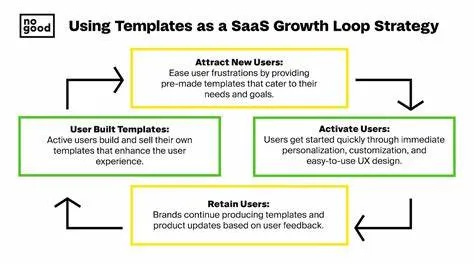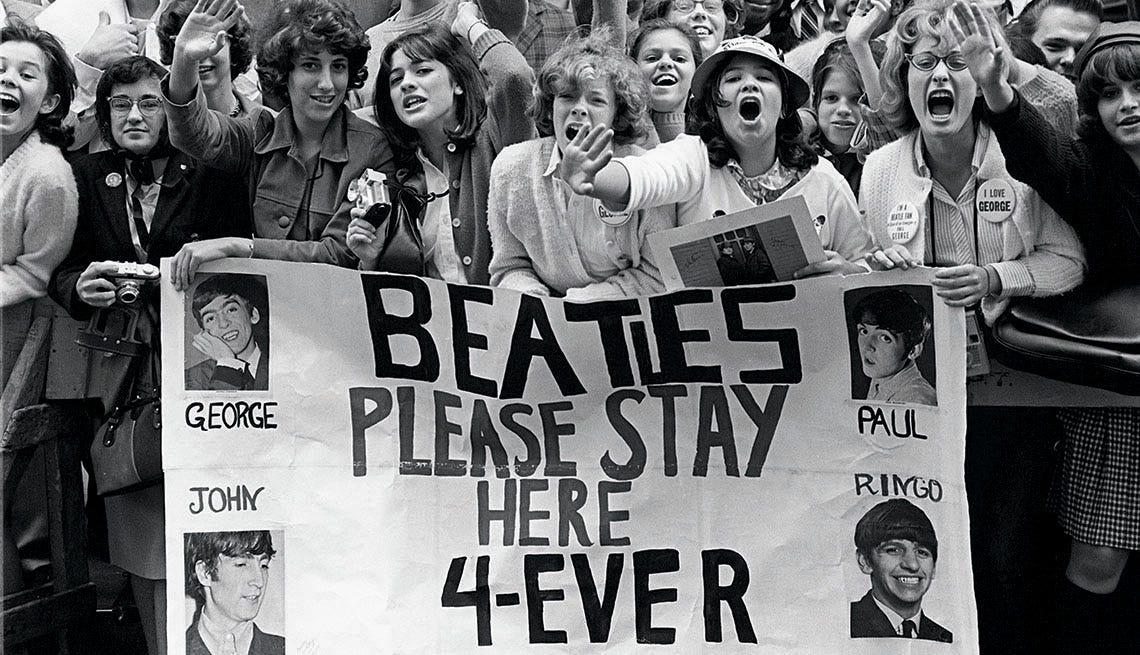There is a well-known quip, “If you are a hammer, everything looks like a nail,” which might as well have been written for the Growth industry. SEO experts tell you that SEO is always the best way to grow your business. Social Media and Paid Ads experts do the same for their respective specialties.
The truth is that different growth strategies work well for various companies and contexts, and most brands do not realize the full range of techniques they have at their disposal. In this two-part series, I cover a wide range of growth strategies, state a well-known company that executed the strategy exceptionally well, and discuss the key learnings and takeaways. For anyone not interested in reading the full article, you can find a summary with all of the key points below:
TLDR Summary
Hubspot - SEO Strategy
Background: Through SEO, Hubspot built the largest corporate blog, generating 8.2M monthly organic visits.
Key Innovative Strategies:
Long-Term Traffic for URLs: Re-used the same URL for its annual reports, accumulating traffic and backlinks over the years.
Free Tools as Lead Magnets: Developed tools like the Email Signature Template Generator, which attracts thousands of visitors monthly.
Pioneered the Pillar-Cluster Model: Organized content into "pillars" with topic clusters, boosting traffic and conversions significantly.
Red Bull - Content Marketing Strategy
Background: Red Bull created its own media company that produces high-quality documentaries, extreme sports content, and more.
Key Innovative Strategies:
Minimal Self-Promotion: Focused on content relevant to its audience, without overt brand promotion.
High-Impact Stunts: Sponsored dramatic events like Felix Baumgartner’s skydive from space.
Unconventional Sponsorships: Invested in diverse stars, from extreme sports athletes to break dancers and chess players.
Glossier - Social Media Strategy
Background: Glossier achieved success through a strong social media presence, with millions of followers across platforms.
Key Innovative Strategies:
Crowdsourcing Product Development: Created products like the Milky Jelly cleanser based on direct community feedback.
User-Generated Content (UGC): Relied heavily on UGC, with up to 42% of its content on platforms like TikTok created by users.
Loyalty Tiers: Developed a funnel to engage and reward its most loyal fans, building a passionate brand community.
Notion - Product-Led Growth (PLG) Strategy
Background: Became a household name in the startup world, with 30 million users in three years.
Key Innovative Strategies:
Symbiotic Relationships with Power Users: Created a certification program for Notion consultants, driving user growth.
Template System: Used templates as a viral loop, simplifying onboarding and encouraging user sharing.
Personalized Experiences: Developed customized workspaces based on user needs, making the product easy to adopt.
Key Takeaways
Each company’s success is attributed to a tailored approach that plays to its strengths and addresses unique audience needs.
Companies that prioritize community-building and authenticity often see the best results.
Adapting and personalizing strategies, like leveraging UGC, innovating in content structures, and focusing on customer needs, can significantly impact growth.
Full Article
#1 - SEO - Hubspot
Background and Results:
Search Engine Optimization (SEO) is the process of improving a website’s visibility in search engine results pages to increase organic traffic. In other words, “How do we rank at the top of Google and other search engines for searches we care about?”
Through SEO, Hubspot built the biggest corporate blog ever for organic search traffic, generating 8.2M monthly organic visits and millions of dollars in free traffic to their site.
How They Did It:
Hubspot created a tremendous amount of content, with over 18,000 pages on its blog alone. This content included everything from topics around ‘the shrug emoji’ and ‘famous quotes’ to its world-renowned annual report. It also did a fantastic job of structuring its content innovatively using the Pillar-Cluster Model.
What was Innovative About Their Strategy:
1). Building Up Long-Term Traffic to Specific URLs: Hubspot’s annual report is a yearly fixture that discusses current trends and developments in the marketing space. Hubspot adds each new annual report to the same URL, resulting in more traffic, backlinks, and engagement for each report year over year. They also spend a lot of time editing and updating existing content to keep it fresh.
2). Free Tools that Act as Lead Magnets: HubSpot has eight free, stand-alone lead magnets. One of them stands out in SEO terms: the Email Signature Template Generator. This page ranks for 5.9K keywords, bringing in 134K of free traffic from Google each month, and it even earned 22.7K backlinks.
3). Pioneering the Pillar-Cluster Model to Content Creation: Instead of creating blog posts designed to rank for specific, long-tail keywords, Hubspot organized their blog posts into specific topic areas, a strategy known as the Pillar-Cluster Model. Each blog post was anchored together by one webpage that provided a broad overview of the topic, then hyperlinked to more specific, deep-dive blog posts that made up a topic cluster. As a result of implementing the Pillar-Cluster Model, Hubspot increased its organic traffic and conversions by 25% and 34%, respectively. If you want to get started with topic clusters, here is an excellent guide from Hubspot on how to do it.
Why it Worked for Them and What We Can Learn:
From an early stage, Hubspot prioritized SEO as its #1 growth strategy and committed an army of writers to create a world-class content strategy. While not too long ago, it would have been prohibitively costly in both time and money to try to imitate even a fraction of Hubspot’s strategy, AI has been a game changer for content marketing. With AI, it is easier than ever today to generate mass amounts of authoritative content at scale and re-create Hubspot’s strategy with far fewer resources. However, to do this, it is imperative that the content you create is well structured, contains links to relevant facts and figures, and is engaging enough to keep the user’s attention. Check out my article here, discussing how best to do this.
#2 - Content Marketing - Red Bull
Background and Results:
Content marketing is a strategic approach focused on creating and distributing valuable, relevant, and consistent content to attract and retain a clearly defined audience and ultimately drive profitable customer action.
“Red Bull Gives You _____”. The fact that you probably read that and immediately thought, “wings” is the most significant sign that Red Bull has done something particularly effective with their content and messaging strategy. If that wasn’t enough, Red Bull made over 10.5 billion euros in revenue in 2023.
How They Did It:
Red Bull transformed from an energy drink company into a full-fledged media powerhouse. They established Red Bull Media House, a dedicated content creation and distribution arm that produces high-quality documentaries, videos, and articles. This move allowed them to create content at the same professional level as major media outlets, effectively becoming a media company that happens to sell energy drinks.
What was Innovative About Their Strategy:
1). Lack of Visible Self-Promotion: If you look at virtually any brand’s content strategy, it is a non-stop string of thinly veiled self-promotion. Top 10 lists where they are shockingly ranked #1, articles favorably comparing themselves to competitors, and more. Red Bull, however, has taken a very different approach.
Their content focuses almost exclusively on topics their audience is likely to be interested in, whether that be extreme sports, music, art, dance, or nightlife. Furthermore, every piece of content they create matches the quality of other publications their target audience might read, like Buzzfeed, Vice, or ESPN. Some examples are videos like this and this.
2). High Impact Stunts: In the 1990s and early 2000s, entrepreneur Richard Branson performed several high-profile stunts to get publicity for his brand, Virgin. Some examples include driving a tank through the streets of New York and bungee jumping off the Palms casino. While Red Bull was not the first to engage in dramatic daredevil stunts, they have taken this approach to a whole new level.
They sponsored Austrian skydiver Felix Baumgartner’s record-breaking skydive from the edge of space, which involved an estimated 128,100-foot drop and $30 million in cost. Another stunt involved Australian daredevil motorcyclist Robbie Maddison leaping 96 feet onto the top of the Arc de Triomphe in Paris, Las Vegas on New Year’s Eve. While pricey in money and time, these stunts have helped Red Bull stand out in a class of its own and gain tremendous publicity.
3). Sponsoring an Incredibly Wide Range of Stars: Most brands are vanilla and predictable in their sponsorships, but Red Bull has stretched the boundaries of who they will sponsor. Red Bull sponsors extreme sports athletes, esports teams, break dancers (by promoting Red Bull BC One), and chess players. Essentially, anyone pushing the boundaries of what is possible or pursuing bold dreams is a fantastic fit for Red Bull’s brand, and they do a tremendous job of cultivating these relationships.
Why it Worked for Them and What We Can Learn:
Red Bull’s strategy, while innovative, was primarily a result of their creativity, resourcefulness, and scrappiness. While it might not be possible to replicate the quantity and quality of Red Bull’s content, we can take inspiration from their extreme focus on audience-relevant and high-quality content, their publicity-generating stunts, and their ability to build a network of inspiring individuals who are aligned with their brand’s values.
#3 - Social Media - Glossier
Background and Results:
Social media marketing is the practice of using social media platforms to promote a brand, connect with the audience, and achieve marketing goals.
Glossier is a famous beauty brand with over $200 million in revenue in 2024. A huge driver of their success has been their innovative social media strategy, which has resulted in 3.1 million followers on Instagram, 434k followers on Facebook, 932k followers on TikTok, and 102k followers on X.com
How They Did It:
While Glossier implemented many unique social media tactics, two factors were pivotal to its success: authenticity and listening to its customers. Some examples of Glossier’s authentic approach were its focus on user-generated content, highlighting diverse, everyday customers instead of relying on models, and sharing loads of behind-the-scenes content. Some examples of Glossier listening to its customers include sharing customer product reviews on social media, relying heavily on interactive polls and quizzes, crowdsourcing product development, and creating an engaging community.
What was Innovative About Their Strategy:
1). Crowdsourcing Product Development: Glossier published a post on its “Into the Gloss” blog asking users what their dream face wash was. They received hundreds of comments from users who were vocal about sharing their pain points and specific product features they wanted. One year later, Glossier released the Milky Jelly cleanser, incorporating the feedback from its community. This made Glossier fans feel highly invested and connected to the brand.
2). Extreme Focus on User-Generated Content (UGC): While many brands rely on UGC, Glossier has taken it to a new level. On Instagram, UGC makes up 33% of Glossier’s in-feed posts. On TikTok, UGC accounts for 42% of Glossier’s total posts. Glossier will then share screenshots of the top 5 UGC pieces of content each week. In addition, Glossier does a fantastic job of compiling user feedback with its Master Threads, which asks users to share their favorite products and tips. Its Ask a Question thread asks users about their various pain points.
3). Creating a Funnel to Identify and Reward Their Most Engaged Fans: Glossier has created “Into the Gloss,” a thriving blog with over 500k regular readers. The most engaged readers of the blog get even closer to Glossier through the “Into the Gloss” Facebook group, which has 95k fans. Glossier then added its 100 most engaged fans to a private Slack group, where they provide direct feedback to the Glossier corporate team.
These 100 fans are also invited to be part of the rep program, where they get perks such as an affiliate link to earn commission and exclusive access to new products and Glossier merchandise. Each rep leader is given a unique landing page where consumers who shop through a Glossier rep page receive a 10% discount on Glossier products. Top performing leaders in the rep program are invited to “rep trips” and other high-end, exclusive perks. Through this program, Glossier connects its most engaged fans and fosters a rock-solid community that will always go to bat for the brand.
Why it Worked for Them and What We Can Learn:
While exceptionally well executed, Glossier’s social media strategy is something any brand can learn from and copy pieces of. Engaging your fans on social media to help them think through new products is a fantastic strategy. Leveraging your fans to create UGC is also brilliant in that it makes fans feel part of your brand and minimizes the content your team needs to create from scratch. Finally, creating loyalty tiers for your fans and rewarding the most loyal is a fantastic way to build passionate cheerleaders for your brand.
#4 - Product-Led Growth - Notion
Background and Results:
Product-led growth (PLG) is a methodology in which user acquisition, expansion, conversion, and retention are driven primarily by the product itself rather than traditional sales or marketing efforts. Users can try and adopt the product for free without going through sales representatives, and the goal is for the product to drive sufficient value that users willingly upgrade to a paid plan.
Notion is a versatile productivity and collaboration tool that has become a household name in the startup world. Its user base has grown to 30 million in three years, and the company’s valuation is around $10 billion. That success can be attributed to Notion’s adept approach to PLG.
How They Did It:
Notion’s strategy hinged on several elements, but its focus was building and maintaining a thriving community. They leveraged this community to drive new referrals, build custom Notion templates, organize events on behalf of Notion, and more.
What was Innovative About Their Strategy:
1). Developing a Symbiotic Relationship With Power Users: Ben Lang, Notion’s Head of Community, noticed that some Notion users began working with companies as Notion consultants. Recognizing the potential here, Ben built out a Notion certification program. Building out certification processes and assessing people is a lot of work, so they offloaded this to someone in the community who was actively doing it. With a list of certified consultants lined up, Notion could now funnel traffic to these consultants, who would then onboard tons of new users to Notion and help expand its reach.
2). Leveraging the Power of Templates: Templates act as a powerful growth engine for Notion by facilitating user onboarding, reducing the learning curve, showcasing the platform’s versatility and potential use cases, and encouraging user-generated content and community participation. Users can submit new templates and use existing ones from an extensive library available on many public platforms, including the one on Notion’s website. Notion’s template system creates a viral growth loop:
#1 - Users discover and use templates
#2 - They explore Notion’s features while customizing templates
#3 - Satisfied users create and share their templates
#4 - New users discover these shared templates, restarting the cycle
3). Prioritizing Personalization: When setting up a personal or company Notion workspace, users undergo a 2-minute personality and use assessment, after which a customized, data-driven workspace is set up for them. These customized workspaces make it easy for users to get onboarded with minimal hiccups and quickly get value out of Notion.
Why it Worked for Them and What We Can Learn:
Notion’s PLG and community-driven strategy were largely possible because they identified and embraced their most fervent fans. Ben Lang, their rockstar Head of Community, was initially just a hyper-enthusiastic Notion power user who spent a good chunk of his time spreading the word and organizing events singing Notion’s praises. It was only because Notion brought him (and others like him) into the fold that they benefited greatly. Identifying one’s most fervent fans and creating win-win relationships is something all brands can benefit from doing.
Conclusion
After reading this article, you hopefully learned more about various growth strategies and some new ideas to implement in your business. If you enjoyed this article, look out for next week’s article, in which we will cover four more companies and four additional growth strategies in-depth.












